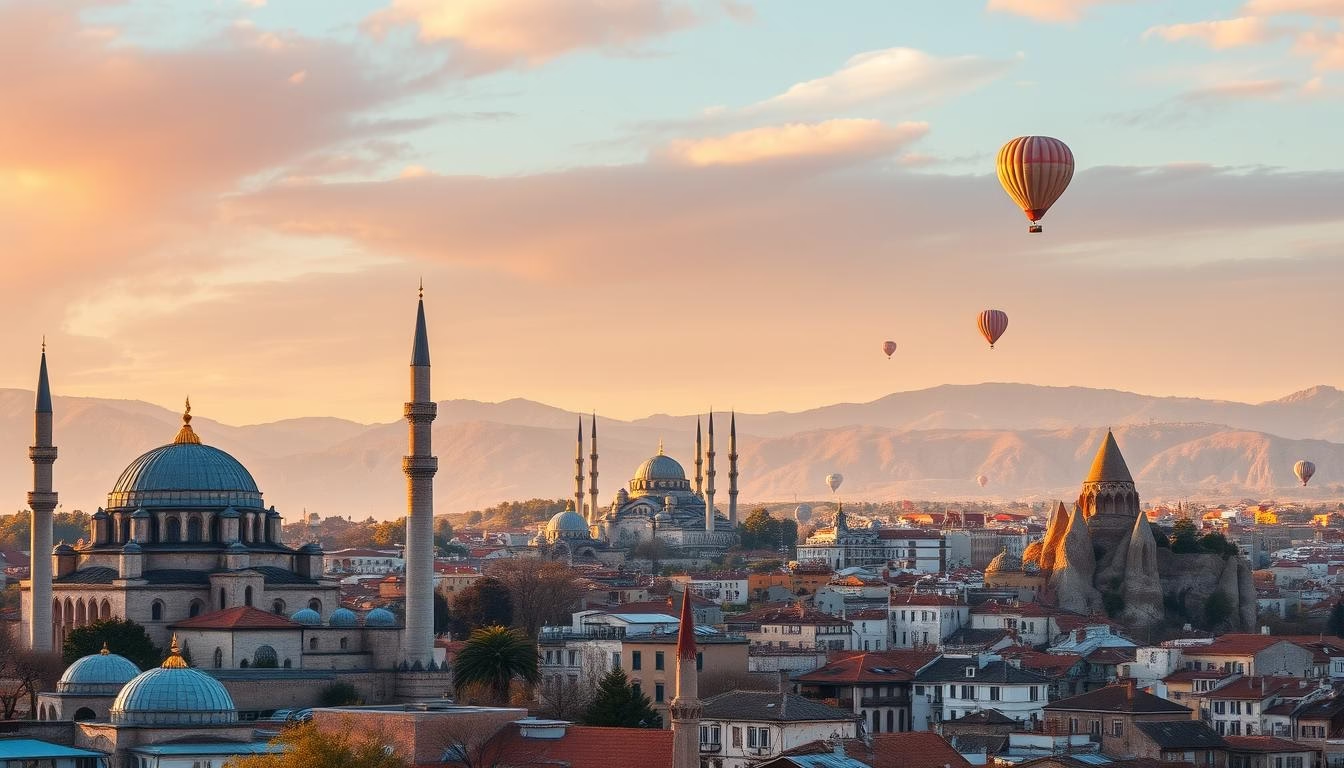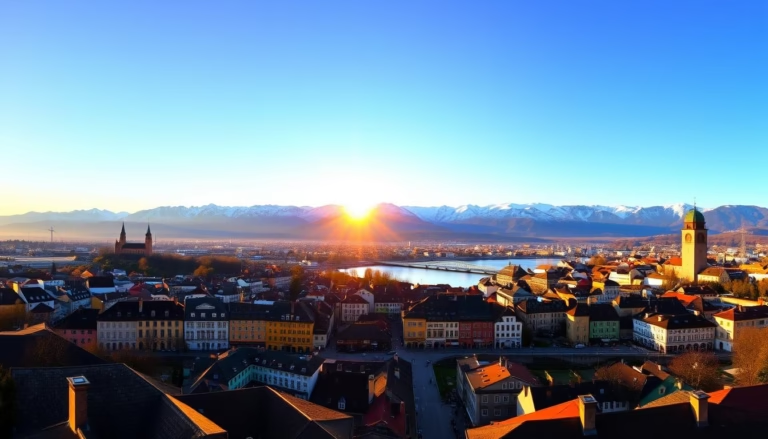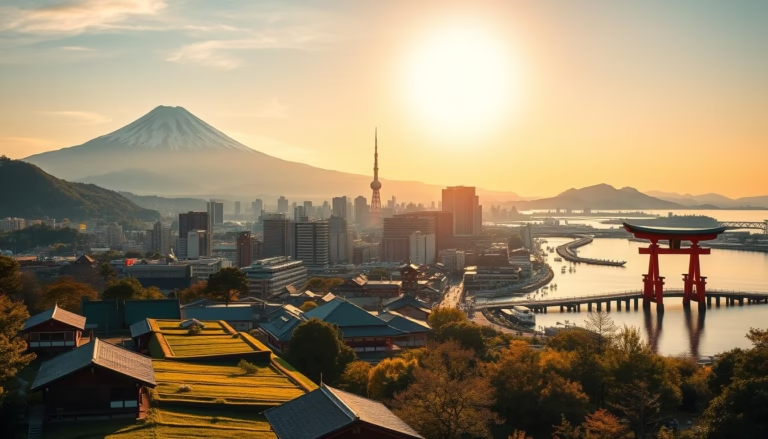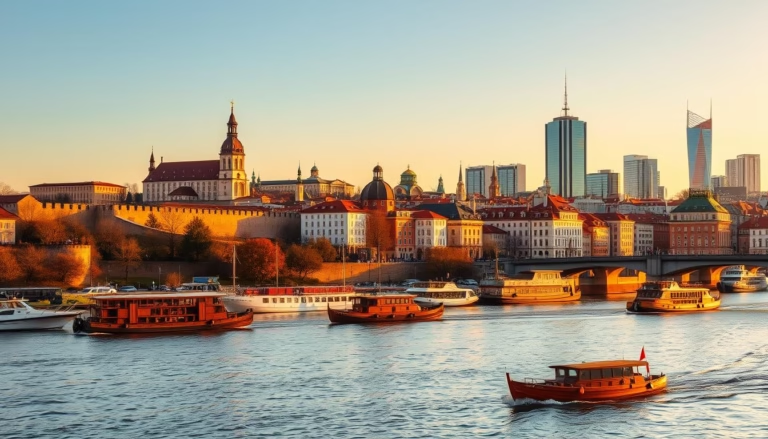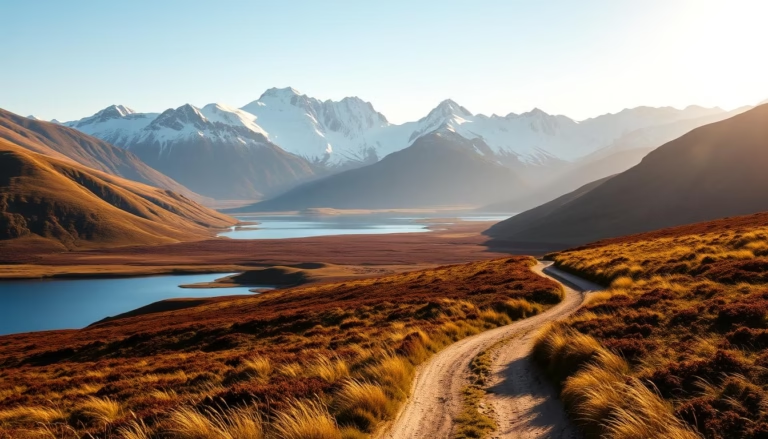Best Cities to Visit in Turkey: Travel Guide & Tips
Turkey welcomed over 50 million international visitors in 2023, yet many travelers still overlook its urban treasures beyond Istanbul. This transcontinental nation blends ancient history with vibrant modernity, creating a tapestry of experiences unmatched in the Mediterranean region.
From Byzantine mosaics whispering tales of emperors to sizzling street food scenes rivaling global culinary capitals, the country’s urban centers deliver unforgettable adventures. Coastal gems sparkle with turquoise waters, while inland hubs pulse with artisan markets and thermal springs.
This guide reveals how to craft your ideal itinerary across diverse destinations. Discover architectural marvels dating back 3,000 years juxtaposed with contemporary art districts. Learn when to chase Mediterranean sunshine or avoid peak crowds at iconic landmarks.
Key Takeaways
- Turkey offers 19 UNESCO World Heritage Sites across its urban areas
- Coastal and inland destinations provide distinct seasonal advantages
- Modern transit options connect major hubs in under 4 hours
- Local festivals transform cities into cultural playgrounds year-round
- Region-specific specialties elevate culinary exploration
Introduction to Turkey’s Diverse Urban Appeal
Where else can you sip apple tea in a 15th-century caravanserai before dancing in a rooftop lounge? This nation straddles continents, blending Byzantine mosaics with avant-garde galleries and Ottoman spice markets with sleek tram networks. Its urban landscapes tell stories older than most modern nations.
Why Turkey Captivates Travelers
The country’s history lives in every stone – Roman aqueducts shadow trendy cafes, while medieval castles overlook yacht-filled marinas. Three empires left their mark here, creating architectural wonders like the Hagia Sophia’s soaring dome and Ephesus’ marble-columned streets.
Locals greet visitors with steaming çay (tea) and stories passed through generations. Regional differences shine through: Aegean olive groves contrast with Anatolia’s lunar valleys, while Black Sea villages hum with distinct folk traditions.
An Overview of Culture and Scenery
Turquoise waters meet pine-clad cliffs along the Lycian Coast, where ancient tombs peer over swimming coves. Inland, otherworldly rock formations hide underground cities carved 3,000 years ago. The people safeguard traditions like silk weaving and shadow theater while embracing modern design.
From thermal springs to citrus-blossom festivals, Turkish cities balance heritage preservation with innovation. Night markets sizzle with kebabs as jazz clubs pulse with energy – proof that timeless charm and contemporary flair coexist beautifully here.
Bodrum – Ancient Ruins and Modern Seaside Charm
Sunlight dances on cobalt waves where ancient marble columns meet luxury yachts. This Aegean gem reveals its dual personality through crumbling stone theaters and chic beach clubs, creating a destination where history buffs and sun-seekers equally thrive.
Historic Landmarks and Iconic Castles
Bodrum Castle dominates the harbor, its medieval walls guarding the Museum of Underwater Archaeology. Inside, amphoras from Bronze Age shipwrecks whisper tales of maritime trade. Just uphill, the Mausoleum at Halicarnassus marks where one of the Seven Wonders of the Ancient World once stood.
The 4th-century BCE theater still hosts concerts under starry skies. Don’t miss the windmill-dotted hills where Pedasa’s ruins reveal Lycian civilization secrets.
Picturesque Beaches and Waterfront Vibes
Azure waters lap against Yahşi Beach’s golden sands, while Karaincir’s pine-shaded coves offer secluded swims. The marina buzzes with sleek catamarans docking beside family-run fish tavernas.
Whitewashed houses with sapphire shutters line cobblestone alleys near Bitez Beach. Here, Ottoman-era architecture blends seamlessly with boutique hotels offering infinity pools overlooking the bay.
Istanbul: The Vibrant Cultural Crossroads
In the northwestern part of the country, where Europe shakes hands with Asia, lies a metropolis that’s been rewriting history since 660 BCE. This transcontinental city, home to 15 million, dazzles visitors with its layered identity – Byzantine basilicas stand shoulder-to-shoulder with Ottoman mosques, while sleek metro lines whisk commuters past Roman aqueducts.
Iconic Mosques and Architectural Marvels
Hagia Sophia epitomizes Istanbul’s architectural evolution. Its massive dome has sheltered Christian mosaics and Islamic calligraphy across 1,500 years. Nearby, the Blue Mosque’s six minarets pierce the sky, their hand-painted tiles creating a cobalt-hued sanctuary.
| Landmark | Era | Must-See Feature |
|---|---|---|
| Hagia Sophia | 6th century | Byzantine-Ottoman fusion dome |
| Blue Mosque | 17th century | 20,000+ Iznik tiles |
| Topkapi Palace | 15th century | Sultan’s jeweled armor collection |
Bustling Bazaars and Nightlife
The Grand Bazaar’s 61 streets hum with haggling over saffron and silver. As sunset paints the Bosphorus gold, Beyoğlu’s streets come alive. Rooftop bars serve raki cocktails beside Byzantine ruins, while underground venues pulse with Anatolian rock music.
Don’t miss the Spice Bazaar’s aromatic lanes, where merchants have traded since 1664. For dinner, try balık ekmek (fish sandwiches) from Eminönü boats before exploring chic cocktail lounges in Karaköy.
Cappadocia – Fairy Chimneys and Hot Air Balloon Rides
Dawn breaks over a Martian-like terrain where stone pillars wear volcanic caps like nature’s top hats. This central Anatolian region reveals Earth’s artistic side through wind-sculpted fairy chimneys and valleys tinted rose-gold by mineral-rich soils. Centuries of human ingenuity meet geological wonders here, creating a living museum of natural and cultural marvels.
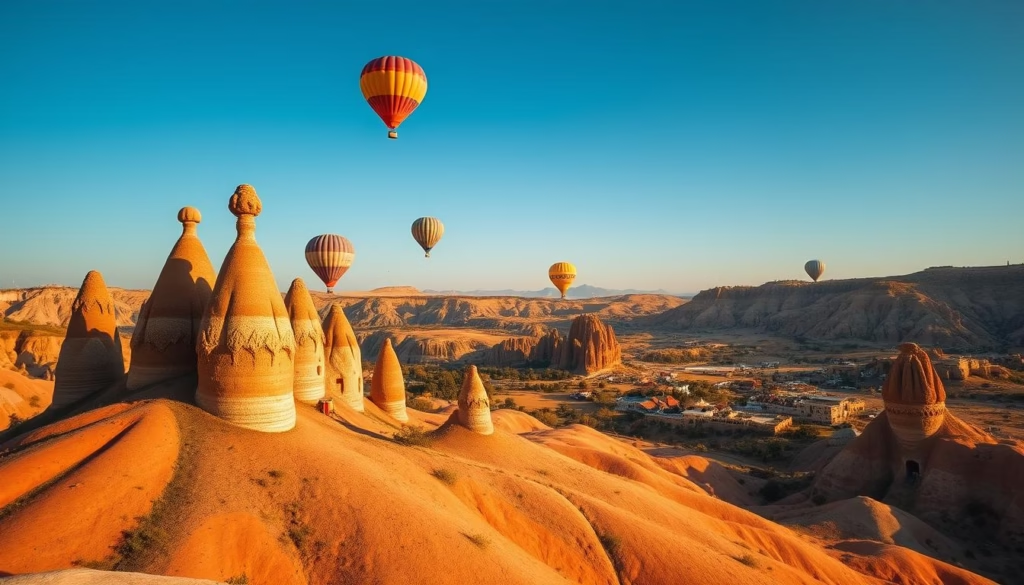
Magical Balloon Experiences
Float silently above this dreamscape at sunrise during hot air balloon rides, where hundreds of colorful orbs rise like confetti against the morning sky. The aerial view exposes hidden patterns in the rock formations – natural amphitheaters and honeycombed cliffs that glow in soft daylight.
Underground Cities and Cave Dwellings
Beneath the surreal landscape lies an even more astonishing world. The 18-level Derinkuyu underground city sheltered thousands during invasions, complete with ventilation shafts and rolling stone doors. Modern visitors can sleep in cave hotels carved into volcanic tuff, where curved walls maintain perfect temperatures year-round.
Above ground, the Göreme Open Air Museum showcases 4th-century churches adorned with vibrant biblical frescoes. Hikers discover secret chapels in Love Valley’s phallic rock towers, while Avanos’ pottery workshops keep ancient ceramic traditions alive through hands-on clay sessions.
Antalya – The Jewel of the Turkish Riviera
Where citrus groves meet sapphire waters, this coastal paradise reveals layers of history beneath its resort surfaces. Antalya’s Turkish Riviera coastline serves as a living timeline – Roman aqueducts frame luxury spas, while Ottoman towers guard yacht-filled harbors.
Ancient Roman and Ottoman Heritage
Step into Kaleiçi’s maze of cobblestone alleys, where 19th-century mansions now house boutique hotels. “These streets whisper stories of silk traders and sea captains,” says local historian Mehmet Yılmaz. The ancient ruins of Aspendos Theatre astonish visitors with near-perfect acoustics – still hosting opera performances after 1,800 years.
| Beach | Surface | Best For |
|---|---|---|
| Konyaaltı | Pebbles | Mountain views & sunsets |
| Lara | Golden sand | Family resorts & water sports |
| Kaputaş | Fine gravel | Snorkeling & seclusion |
Düden Waterfalls showcase nature’s power just 7 miles from the old town. Upper falls crash through pine forests, while lower cascades plunge dramatically into the Mediterranean. Evening brings vibrant energy to the marina, where fishing boats bob beside dinner cruises.
The region’s archaeological wealth extends beyond city limits. Day trips reveal Perge’s stadium-sized agora and Side’s temple-topped peninsula. For modern comforts, Lara Beach’s resort strip offers champagne brunches with sea views, proving Antalya masters the art of blending eras.
Kas – A Charming Mediterranean Gem
Cobalt waves kiss pebbled shores where Lycian tombs peer over boutique galleries. This coastal retreat combines artistic energy with archaeological wonders, offering a slower pace than busier resorts. Narrow lanes wind past 4th-century BCE ruins shaded by pomegranate trees, while sailboats bob in a harbor framed by the Taurus Mountains.
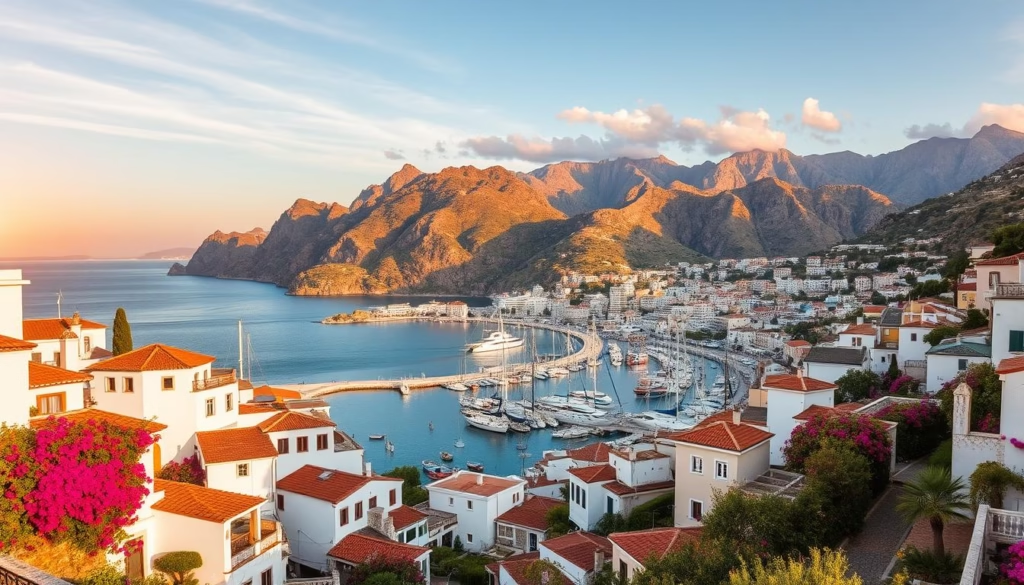
Hidden Beaches and Bohemian Vibes
Kas thrives on contrasts. Morning finds freedivers exploring a 2,000-year-old shipwreck near Kekova Island, while afternoon brings watercolor painters to sun-dappled plazas. The town’s creative pulse beats strongest in its artist-owned boutiques and family-run lokantas serving garlicky shrimp casseroles.
| Beach | Access | Unique Feature |
|---|---|---|
| Kaputaş | 187-step descent | Turquoise canyon-like cove |
| Big Pebble | 10-min walk from center | Natural rock platforms |
| Limanagzi | Boat-only | Pine-fringed hidden bay |
History buffs marvel at Antiphellos Theater’s intact seating, where performances still occur under moonlight. Meanwhile, the Lycian Way trailhead invites hikers to discover cliffside tombs overlooking the Mediterranean’s bluest waters. As dusk falls, wooden gulets set sail with passengers sipping sage tea against a peach-hued sky.
What truly defines this place? Perhaps it’s the melding of eras – ancient stonework beside jazz cafes, or fishermen mending nets near contemporary art installations. Kas doesn’t just showcase Turkish culture; it lets you live it through every cobblestone and seaside sunset.
Patara – Pristine Beaches and Ancient Heritage
Where Mediterranean waves meet Lycian legends, this coastal sanctuary blends untouched nature with archaeological wonders. Located 45 miles west of Kaş, Patara’s golden sands stretch 18 kilometers – the Mediterranean’s longest natural beach recognized by Times Online as a global standout.
Archaeological Treasures and Coastal Wonders
The ancient ruins here tell layered stories. Walk through a Roman theater that once hosted 6,000 spectators, past the Lycian coast’s oldest lighthouse. Nearby, the archaeological museum displays artifacts from Saint Nicholas’s birthplace – yes, that Saint Nick.
Loggerhead sea turtles return annually to nest on these shores, their protected habitat framed by rolling dunes. After exploring, cool off in turquoise waters where Roman ships once anchored. The bohemian village of Gelemiş offers family-run pensions and citrus grove walks, keeping the area refreshingly authentic.
Patara proves Turkey’s magic lies in places where history and nature share the spotlight. From sunrise over marble columns to moonlit turtle tracks, this UNESCO site delivers quiet moments that linger long after departure.
